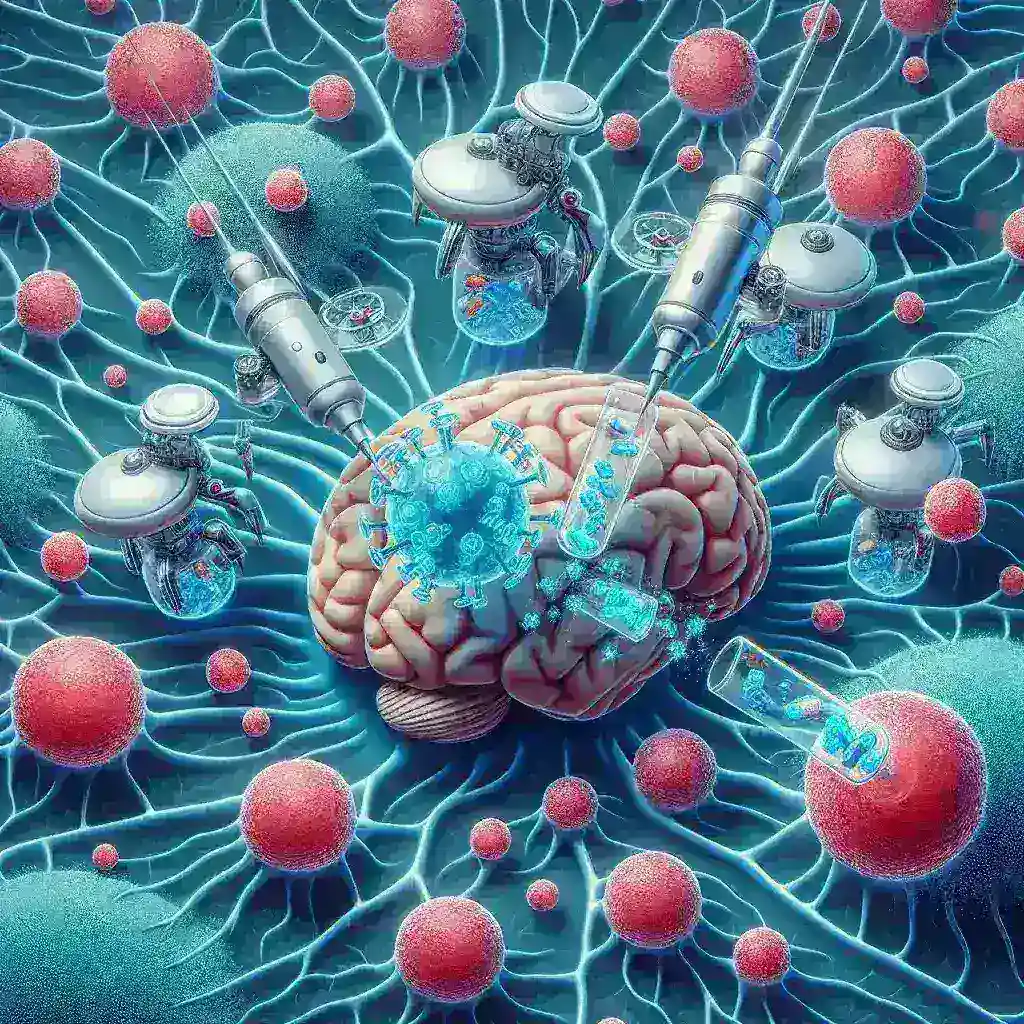Introduction to AI-Powered Nanobots
The rapid evolution of technology in healthcare has led to remarkable innovations, particularly in cancer treatment. One of the most exciting developments is the use of AI-powered nanobots designed to target brain tumors with unparalleled precision. These microscopic robots are set to revolutionize the way we approach drug delivery, ultimately enhancing the efficacy of treatments while minimizing side effects. This article delves into the fascinating world of nanobots, their mechanisms, advantages, and the future they promise in the battle against brain tumors.
Understanding Brain Tumors
Brain tumors can be categorized into primary and secondary types, with significant differences in their origin and treatment. Primary brain tumors originate in the brain itself, while secondary tumors spread from other parts of the body. The complexity of brain tumors poses unique challenges for treatment, as traditional methods such as surgery, radiation, and chemotherapy often result in undesirable side effects and limited effectiveness.
The Role of Targeted Therapy
Targeted therapy aims to attack cancer cells while sparing healthy cells, and it offers a more focused approach compared to conventional treatments. However, achieving precise drug delivery to the tumor site remains a significant hurdle. This is where AI-powered nanobots come into play.
What are AI-Powered Nanobots?
Nanobots are tiny machines, typically on the nanometer scale, capable of performing specific tasks at a cellular level. When integrated with artificial intelligence, these nanobots can learn and adapt to their environment, making them incredibly efficient. They are designed to navigate through the bloodstream, identify cancerous cells, and deliver therapeutic agents directly to the tumor.
How AI Enhances the Functionality of Nanobots
- Real-Time Data Analysis: AI algorithms enable nanobots to analyze their surroundings in real-time, allowing them to make informed decisions about their navigation and drug delivery.
- Precision Targeting: Machine learning techniques assist in recognizing specific tumor markers, ensuring that the drugs are delivered precisely where they are needed.
- Adaptive Responses: AI allows nanobots to adapt their behavior based on the tumor’s response, optimizing drug release and enhancing treatment outcomes.
Mechanism of Action
The mechanism by which AI-powered nanobots deliver drugs to brain tumors is a multi-step process:
- Navigation: After being injected into the bloodstream, nanobots utilize AI-driven algorithms to navigate towards the tumor site.
- Detection: Once near the tumor, they identify cancerous cells using specific biomarkers that differentiate them from healthy cells.
- Drug Release: Upon identification, nanobots release their drug payload directly at the tumor site, maximizing therapeutic effects while minimizing systemic exposure.
Advantages of AI-Powered Nanobots
The integration of AI technology in nanobot design presents numerous advantages:
- Minimized Side Effects: By targeting only cancerous cells, these nanobots reduce the collateral damage often associated with traditional chemotherapy.
- Improved Efficacy: Precision drug delivery enhances the therapeutic impact of treatments, potentially leading to better patient outcomes.
- Personalized Medicine: AI can tailor treatments based on individual patient profiles, ensuring a more personalized approach to cancer therapy.
Challenges and Limitations
While the promise of AI-powered nanobots is immense, several challenges remain:
- Manufacturing Complexity: Creating nanobots with consistent quality at scale is a significant challenge that researchers must overcome.
- Regulatory Hurdles: The introduction of nanobots into clinical settings requires rigorous testing and approval processes.
- Ethical Concerns: As with any emerging technology, ethical considerations surrounding the use of AI in healthcare must be addressed.
The Future of AI-Powered Nanobots in Cancer Treatment
As research in nanotechnology and AI progresses, the future of AI-powered nanobots appears promising. Experts predict that:
- Increased Adoption: More clinical trials will lead to wider acceptance and utilization of nanobots in various forms of cancer treatment.
- Combination Therapies: Nanobots may be used in conjunction with other treatment modalities, such as immunotherapy, to enhance overall efficacy.
- Global Accessibility: Advancements in technology could reduce costs, making precision medicine accessible to a broader population.
Case Studies and Real-World Applications
Several studies have demonstrated the effectiveness of AI-powered nanobots in targeting brain tumors:
- Case Study 1: In a recent study, researchers used AI-driven nanobots to deliver chemotherapy directly to glioblastoma cells, resulting in significantly reduced tumor size compared to traditional delivery methods.
- Case Study 2: Another trial focused on personalized nanobots designed to adapt their drug release based on the specific genetic markers of a patient’s tumor, showing improved survival rates.
Conclusion
The development of AI-powered nanobots represents a significant leap forward in the treatment of brain tumors. By leveraging the power of artificial intelligence to enhance precision drug delivery, these nanobots offer hope for improved patient outcomes and a potential cure for one of the most challenging forms of cancer. As research continues to evolve, the integration of technology in medicine will undoubtedly pave the way for new, innovative approaches to cancer treatment.
Call to Action
To stay updated on the latest advancements in healthcare technology and its applications in cancer treatment, subscribe to our newsletter and join the conversation on social media.

Leave a Reply